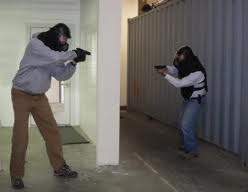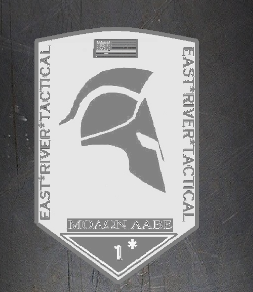LEO * GOV * SECURITY
COURSES
COURSES
IPMBA Police Cyclist Course:
Link to IPMBA required equipment list:
http://www.ipmba.org/printables/Equ-Po-Cyc-Cour.pdf
http://www.ipmba.org/printables/Equ-Po-Cyc-Cour.pdf
Link to required forms to be completed before class:
- http://www.ipmba.org/printables/IPMBA-Mem-Cert-App.pdf
Maximum class size 10 students per instructor.
Patrol Response to the Active Shooter
Work & School Place Violence.
Work & School Place Violence.
This course is designed as a 20-hr "OPERATOR LEVEL COURSE" to assist law enforcement agencies in dealing with the increasing problem of "Active Shooters" in highly populated buildings such as: Schools, businesses, day-care centers; etc.
A review of the most publicized and recent active shooter tragedies will be conducted. The importance of preparing for this type of dynamic, quick changing, worse case scenario in a realistic training environment cannot be overemphasized. Because of this reality, this course includes extensive "Force on Force" drilling, as well as field-training exercises with actors and projectile training weapons designed to simulate a "real-world" scenario. This immersion increases the proficiency level of the participant so that he or she can more effectively understand these proven concepts and protocols.
This course is highly recommended to any law enforcement professional that may be asked to respond to a call for help during one of these types of incidents such as: patrol officers, school resource officers, detectives or administrators.
Equipment required:
•Choice of BDU's/Sweats/Overalls/Flight Suit •Flashlight used on duty •Duty Rig •Eye, Ear, Groin, & Neck Protection, Gloves •(Chest Protection for Women) •Knee-Pads •Liquids
A review of the most publicized and recent active shooter tragedies will be conducted. The importance of preparing for this type of dynamic, quick changing, worse case scenario in a realistic training environment cannot be overemphasized. Because of this reality, this course includes extensive "Force on Force" drilling, as well as field-training exercises with actors and projectile training weapons designed to simulate a "real-world" scenario. This immersion increases the proficiency level of the participant so that he or she can more effectively understand these proven concepts and protocols.
This course is highly recommended to any law enforcement professional that may be asked to respond to a call for help during one of these types of incidents such as: patrol officers, school resource officers, detectives or administrators.
Equipment required:
•Choice of BDU's/Sweats/Overalls/Flight Suit •Flashlight used on duty •Duty Rig •Eye, Ear, Groin, & Neck Protection, Gloves •(Chest Protection for Women) •Knee-Pads •Liquids
Minimum class size: 6 Maximum class size: 12
Defensive Tactics.
The PPCT Defensive Tactics course is the first subject control system developed through tactical, legal and medical research. Tactically, the system addresses the most common types of resistance officers encounter allowing the instructor to maximize training on job related techniques. Legally, the PPCT System teaches a simple use of force continuum which clarifies the appropriate level of force for every level of resistance. Medical research was conducted on every PPCT technique to refine technique efficiency and to ensure the medical implications were proportional to the level of resistance.
Course Topics:
PPCT Control Principles: The foundation of the PPCT training systems is based upon a series of training principles. This unit examines the PPCT Force Continuum, principles of control, survival reaction time and tactical positioning.
Tactical Handcuffing: Tactical speed handcuffing provides immediate subject control and reduces risk to the officer. This system is designed to train the student in a method which will be the same under handcuffing conditions of standing, kneeling or prone, with the completion time under three seconds.
Pressure Point Control Tactics: This unit will address a system of controlling subjects by applying finger touch pressure to selected pressure points on the head and neck. The application of these pressure points is utilized to control passive or defensive resistance and are highly effective no matter what the size or strength level of the officer.
Joint Locks: Escort position resistance is one of the four most common types of resistance officers encounter. This unit provides officers with two joint locks designed specifically to control escort position resistance.
Defensive Counterstrikes: The defensive counterstrike unit teaches reflexive reaction to a physical attack when impact weapons or firearms are not appropriate. The students will learn to neutralize an aggressive assault with a basic system of blocks, punches and kicks, designed to control a subject with minimal chance of injury.
PPCT Impact Weapon System: The training from this unit can be deployed with a traditional straight baton, riot baton or a collapsible/telescoping baton. This effective system employs the use of nerve motor points as targets instead of joints and bones which decreases the potential of creating connecting tissue damage and bone fractures.
Handgun Retention and Disarming: This unit teaches a simple system of disarming attackers, as well as handgun or long gun retention. The unit will address holstered defenses and drawn weapon defenses.
Minimum class size - 10 students.
Course Topics:
PPCT Control Principles: The foundation of the PPCT training systems is based upon a series of training principles. This unit examines the PPCT Force Continuum, principles of control, survival reaction time and tactical positioning.
Tactical Handcuffing: Tactical speed handcuffing provides immediate subject control and reduces risk to the officer. This system is designed to train the student in a method which will be the same under handcuffing conditions of standing, kneeling or prone, with the completion time under three seconds.
Pressure Point Control Tactics: This unit will address a system of controlling subjects by applying finger touch pressure to selected pressure points on the head and neck. The application of these pressure points is utilized to control passive or defensive resistance and are highly effective no matter what the size or strength level of the officer.
Joint Locks: Escort position resistance is one of the four most common types of resistance officers encounter. This unit provides officers with two joint locks designed specifically to control escort position resistance.
Defensive Counterstrikes: The defensive counterstrike unit teaches reflexive reaction to a physical attack when impact weapons or firearms are not appropriate. The students will learn to neutralize an aggressive assault with a basic system of blocks, punches and kicks, designed to control a subject with minimal chance of injury.
PPCT Impact Weapon System: The training from this unit can be deployed with a traditional straight baton, riot baton or a collapsible/telescoping baton. This effective system employs the use of nerve motor points as targets instead of joints and bones which decreases the potential of creating connecting tissue damage and bone fractures.
Handgun Retention and Disarming: This unit teaches a simple system of disarming attackers, as well as handgun or long gun retention. The unit will address holstered defenses and drawn weapon defenses.
Minimum class size - 10 students.
Taser: X 26 - M 26
COURSE TITLE: TASER X 26 - M 26 Certification Course
COURSE TIME: 8 Hours
DESCRIPTION: This course covers the uses and concepts associated with the deployment of the TASER M 26 & X 26 ECD. Students are taught through the use of classroom instruction and hands-on scenarios.
AGE: 18 y/o and older
Officers learn about a force continuum in which they understand the appropriate levels of force that are legally justified.
When deadly force may not be necessary, it makes sense to have another option between physical force and deadly force. TASER ECD's emit electrical pulses which temporarily incapacitates an individual to gain control.
Course requirements are 8 hours of instruction with firing a minimum of two Air TASER cartridges. Students are not required to be tased, but can at their own request and at their own risk. Class includes 8 hours of instruction, class materials and a certificate of completion. After successful completion of both the practical and written test, the officer is certified in its proper use for a two (2) year period.
Students must provide their own department X 26 or M 26 Taser ECD, as well as bring 2 Air Taser catridges for class. (CARTIDGES NOT PROVIDED FOR STUDENTS.)
COURSE TIME: 8 Hours
DESCRIPTION: This course covers the uses and concepts associated with the deployment of the TASER M 26 & X 26 ECD. Students are taught through the use of classroom instruction and hands-on scenarios.
AGE: 18 y/o and older
Officers learn about a force continuum in which they understand the appropriate levels of force that are legally justified.
When deadly force may not be necessary, it makes sense to have another option between physical force and deadly force. TASER ECD's emit electrical pulses which temporarily incapacitates an individual to gain control.
Course requirements are 8 hours of instruction with firing a minimum of two Air TASER cartridges. Students are not required to be tased, but can at their own request and at their own risk. Class includes 8 hours of instruction, class materials and a certificate of completion. After successful completion of both the practical and written test, the officer is certified in its proper use for a two (2) year period.
Students must provide their own department X 26 or M 26 Taser ECD, as well as bring 2 Air Taser catridges for class. (CARTIDGES NOT PROVIDED FOR STUDENTS.)
Minimum class size 6, maximum 25.


FORCE
ON
FORCE
ON
FORCE



